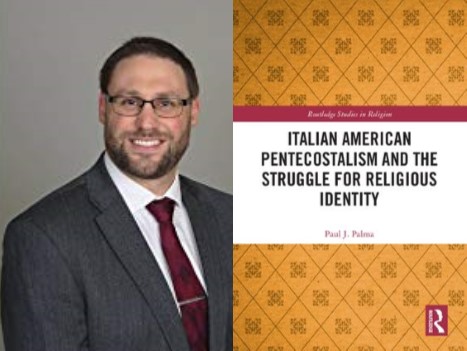The Global Reach and Lasting Legacy of Italian Pentecostalism: An Interview with Paul Palma
Those who are familiar with the New Testament book of Acts, perhaps especially Pentecostal believers, know that people in various places in the first century world received the Baptism in the Holy Spirit with the physical sign of speaking in tongues. Both Jews (Acts 2) and Gentiles (Acts 10) had this experience. This pattern has been repeated numerous times throughout history. Many are aware of the outpouring of the Holy Spirit at Azusa Street. One significant move of God that is not as well known is the Lord’s work among the Italian people.
PneumaReview.com had the opportunity to speak with two scholars about this move of God, each of them giving an interview. The first of these interviews is with Dr. Paul Palma. He has written a significant book called Italian American Pentecostalism and the Struggle for Religious Identity, published in August 2019. In this book, he has written about the Italian Pentecostal Movement in the twentieth and twenty-first centuries. The second interview is with Dr. Michael Brown. It may be a surprise to some but an Italian Pentecostal Church played an important role in his spiritual journey. We trust that you will find these interviews informative and inspiring.

Pneuma Review: When and where did the modern-day Italian Pentecostal Movement start?
Paul Palma: In assessing the origins of any religious movement, I think it is helpful to distinguish between a movement and specific phenomena. Pentecostal phenomena—“baptism in the Spirit,” speaking in tongues, healing, etc.—have been present among Italian peoples for centuries. Such phenomena, typically occurring in isolated contexts, were reported in parts of Italy in the late nineteenth century as well as at the Azusa Street Revival in 1906. A movement, on the other hand, brings cohesion to such phenomena for ongoing edification within a congregational setting. Defined in this latter sense, the origins of Italian Pentecostalism trace to Chicago. There is wide consensus, among North American, Italian, as well as South American scholarship, that the Italian Pentecostal Movement first took shape among an independent holiness congregation of Italian immigrants in inner-city Chicago in 1907.
Some members of this Chicago Italian congregation experienced the baptism in the Spirit at William H. Durham’s North Avenue Mission, the center of a revival considered in many respects to be the Midwest transplant of Azusa Street. From Durham’s church, the revival made its way to their Italian mission on West Grand Avenue, only blocks away. In the weeks and months that followed, numerous Italians were converted and reportedly baptized in the Spirit. The congregation later adopted the name the Assemblea Cristiana (Christian Assembly), becoming the first Italian Pentecostal church on record.
Pneuma Review: Which denominations today can trace their roots back to the Italian Pentecost in Chicago?
Paul Palma: There are numerous denominations today that trace their roots to Chicago’s Assemblea Cristiana. These are centered chiefly in the United States, Canada, Brazil, Argentina, and Italy. The flagship denomination of the Italian Pentecostal Movement was the Christian Church of North America (CCNA), today known as the International Fellowship of Christian Assemblies, established in 1927. The Italian Pentecostal Church of Canada (now the Canadian Assemblies of God) developed from the CCNA, although incorporated as a separate religious body in 1959. The Assemblea di Dio in Italia (Assemblies of God in Italy, ADI), the largest Protestant denomination in Italy, was also founded with the help of Italian Pentecostal pioneers from the CCNA. Numerous other denominations in Italy trace their roots to the classical Pentecostalism of the Assemblea Cristiana, among them being the Chiesa Cristiana Pentecostale Italiana (Italian Pentecostal Christian Church), Chiesa Apostolica in Italia (Apostolic Church in Italy), Chiese Elim in Italia (Italian Elim Churches), Chiesa di Dio (Church of God), Congregazioni Cristiane Pentecostali (Pentecostal Christian Congregation), and the Chiese Evangeliche della Valle del Sele (Sele Valley Evangelical Churches).
Category: Church History, Fall 2019


